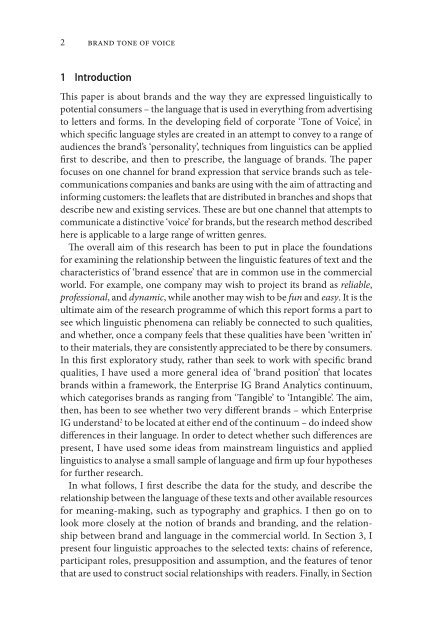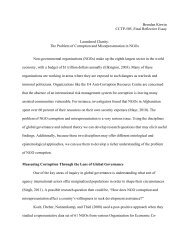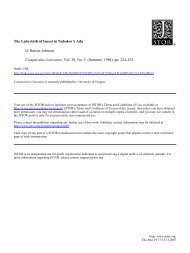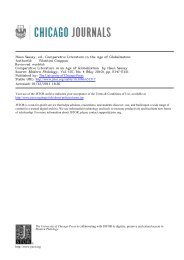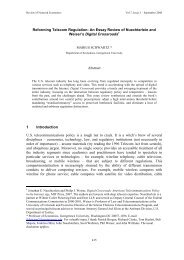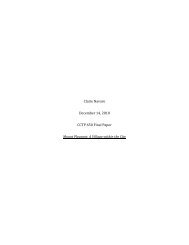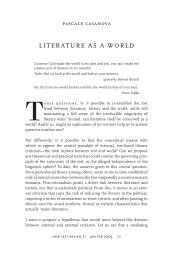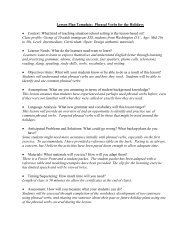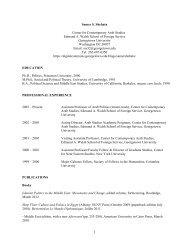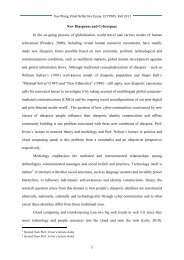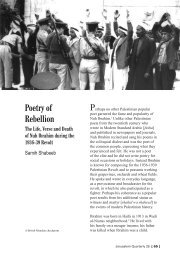Brand Tone of Voice:
Brand Tone of Voice:
Brand Tone of Voice:
- No tags were found...
You also want an ePaper? Increase the reach of your titles
YUMPU automatically turns print PDFs into web optimized ePapers that Google loves.
and tone <strong>of</strong> voice1 IntroductionThis paper is about brands and the way they are expressed linguistically topotential consumers – the language that is used in everything from advertisingto letters and forms. In the developing field <strong>of</strong> corporate ‘<strong>Tone</strong> <strong>of</strong> <strong>Voice</strong>’, inwhich specific language styles are created in an attempt to convey to a range <strong>of</strong>audiences the brand’s ‘personality’, techniques from linguistics can be appliedfirst to describe, and then to prescribe, the language <strong>of</strong> brands. The paperfocuses on one channel for brand expression that service brands such as telecommunicationscompanies and banks are using with the aim <strong>of</strong> attracting andinforming customers: the leaflets that are distributed in branches and shops thatdescribe new and existing services. These are but one channel that attempts tocommunicate a distinctive ‘voice’ for brands, but the research method describedhere is applicable to a large range <strong>of</strong> written genres.The overall aim <strong>of</strong> this research has been to put in place the foundationsfor examining the relationship between the linguistic features <strong>of</strong> text and thecharacteristics <strong>of</strong> ‘brand essence’ that are in common use in the commercialworld. For example, one company may wish to project its brand as reliable,pr<strong>of</strong>essional, and dynamic, while another may wish to be fun and easy. It is theultimate aim <strong>of</strong> the research programme <strong>of</strong> which this report forms a part tosee which linguistic phenomena can reliably be connected to such qualities,and whether, once a company feels that these qualities have been ‘written in’to their materials, they are consistently appreciated to be there by consumers.In this first exploratory study, rather than seek to work with specific brandqualities, I have used a more general idea <strong>of</strong> ‘brand position’ that locatesbrands within a framework, the Enterprise IG <strong>Brand</strong> Analytics continuum,which categorises brands as ranging from ‘Tangible’ to ‘Intangible’. The aim,then, has been to see whether two very different brands – which EnterpriseIG understand 2 to be located at either end <strong>of</strong> the continuum – do indeed showdifferences in their language. In order to detect whether such differences arepresent, I have used some ideas from mainstream linguistics and appliedlinguistics to analyse a small sample <strong>of</strong> language and firm up four hypothesesfor further research.In what follows, I first describe the data for the study, and describe therelationship between the language <strong>of</strong> these texts and other available resourcesfor meaning-making, such as typography and graphics. I then go on tolook more closely at the notion <strong>of</strong> brands and branding, and the relationshipbetween brand and language in the commercial world. In Section 3, Ipresent four linguistic approaches to the selected texts: chains <strong>of</strong> reference,participant roles, presupposition and assumption, and the features <strong>of</strong> tenorthat are used to construct social relationships with readers. Finally, in Section


